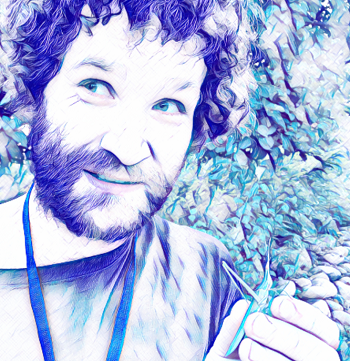Ed Baker FLS ARCS

I am an interdisciplinary researcher investigating how technology can be used to monitor biodiversity, in particular using bioacoustic and ecoacoustic approaches.
Latest publications
Catalysts for change: Museum gardens in a planetary emergency
Bioacoustic and Ecoacoustic Data in Audiovisual Core
Good practice guidelines for long-term ecoacoustic monitoring in the UK
Latest blog posts
- Urban Nature Project Wins Gold at Wood Awards
- Voices for Change: A Night of Climate Action
- AI has an ASCII grasshopper problem
- Urban Nature Project Wins Landscape Institute Award
- New Audiovisual Core comment period
Talks
22/04/2025 - Urban Research Station
03/03/2025 - Impacts of Urban Noise
22/01/2025 - TDWG Kingston Biodiversity Network
05/12/2024 - NHM x Natural England
08/11/2024 - Digital Dimensions of Nature Recovery
Notes
Some thoughts on:
Sensor network philosophy
Don’t innovate the basics
We have established solutions for many problems, these solutions come with existing experience and communities. We should not innovate for the sake of innovation.
Commodity hardware
Bespoke hardware is expensive and difficult to maintain. Commodity Linux hardware such as Raspberry Pi is cheap, can be supported by existing IT teams, and has a large community of users. There is a clear replacement and upgrade path.
Existing software solutions
Automate maintenence
- Raspberry Pi - some software solutions that facilitate installation and maintenence of a sensor network.
Build for the future
Over-capacity
Installing an underground wired network is a once-only opportunity. We should install more capacity than we need now, so that we can expand the network in the future. This includes over-specifying the digital network capacity, and preparing the grounds for the installation of more sensors.
Easy to maintain
The easier the system is to maintain, the more people who can maintain it. This means that the system will be more resilient to changes in personnel. Integrate with existing systems and procedures.
Expandable
The initial physical build must allow for easy expansion. Sensors may need to be put anywhere in the gardens. Design to allow wired connections anywhere without crossing paths. This implies the initial build will have more ducting than initially required.
Embrace the mess
If a sensor network is developed, or even just maintained, over a period of years there will be heterogenity in the types of sensors, the hardware and software reading the sensors, and how the data is transmitted. Sensors are deprecated and new versions released, the control hardware and software will be upgraded, and the data transmission might change in interval or location. The system will be affected by failures of hardware, software, networking, and people. This death and renewal is a part of the long-term success of the system, and the sytem should anticipate these changes.